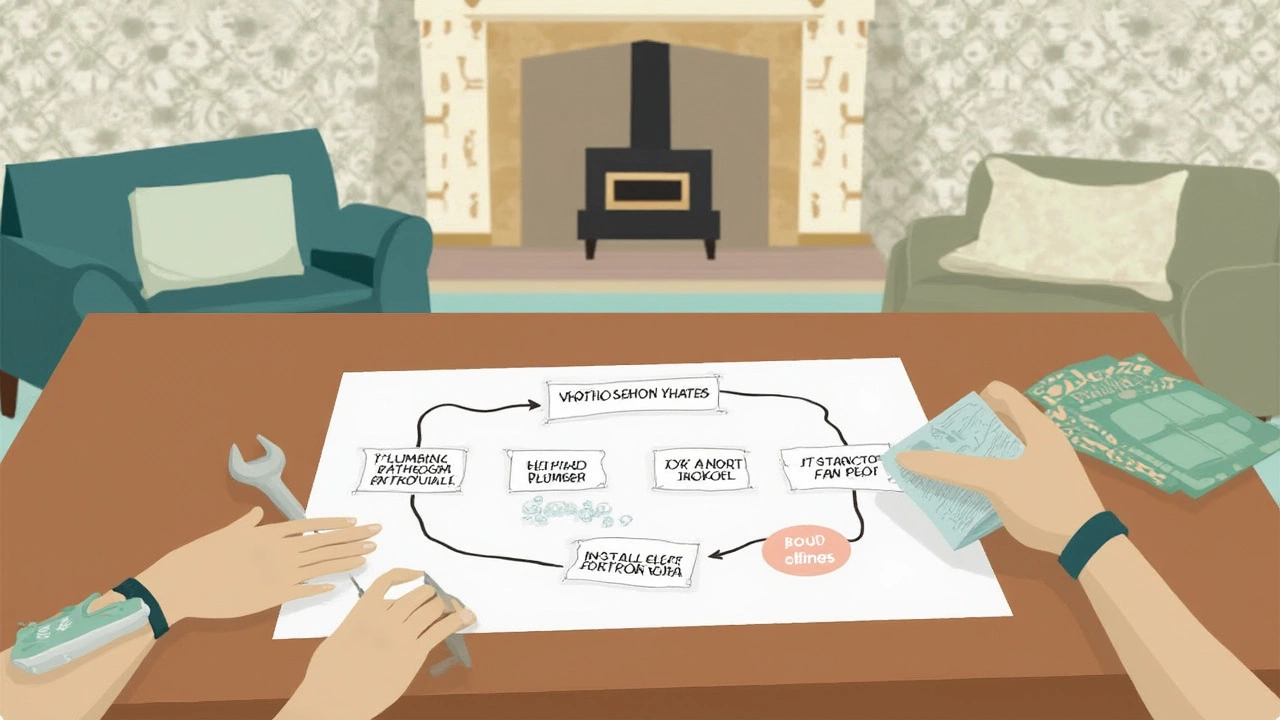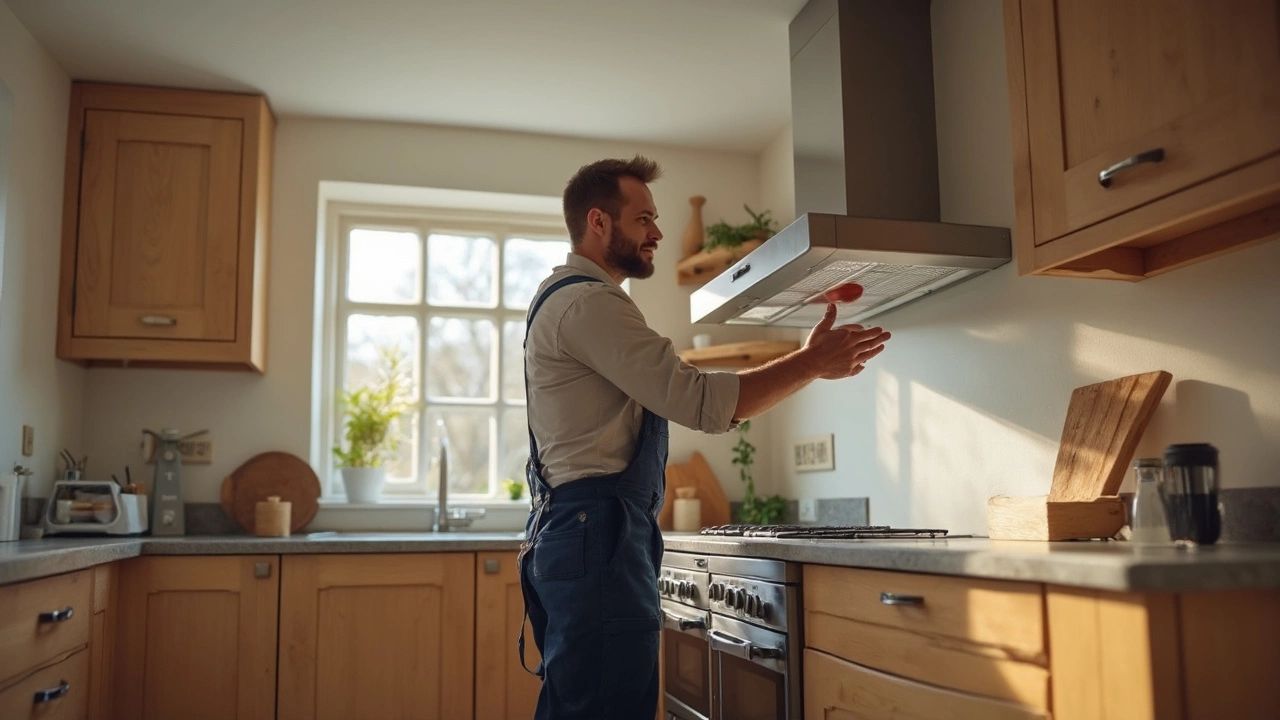So, you're thinking about getting an extractor fan installed and wondering if your friendly neighborhood plumber can get the job done? While plumbers might not be the first folks you think of for this task, they can indeed install extractor fans, especially if there's some piping involved.
Why a plumber? Well, for starters, they know a thing or two about venting and ducts, which are crucial components of an extractor fan setup. It's not just about attaching the fan to the ceiling or wall; proper venting ensures moisture or unwanted smells get carried out effectively.
Before jumping in, though, consider the complexity of your specific installation. Some setups are straightforward and can double up as a DIY weekend project. But when things get a bit complicated or when structural modifications are needed, having a pro with the right know-how can save you a lot of hassle.
- Why Consider a Plumber?
- The Skills a Plumber Brings
- Installation Tips and Tricks
- Choosing Between Plumber and Specialist
- DIY vs Professional Installation
Why Consider a Plumber?
Alright, so you're thinking about whether a plumber is the right person to tackle your extractor fan installation, huh? While you might usually call a plumber for a leaky faucet or a clogged drain, here's why it's worth considering them for this job.
Understanding Ductwork and Venting
First off, plumbers are pretty well-versed with all things ductwork and venting-related. When you install an extractor fan, it’s not just about hooking it up to power and sticking it to the ceiling. Getting the venting right is crucial to ensuring that unwanted air and moisture are effectively carried outside. Plumbers often have the skills needed for this part of the installation, ensuring that your fan isn't just making noise but actually improving your home's air quality.
Tackling Complex Installations
Some homes have tricky layouts where duct pathways aren't straightforward. Plumbers, used to navigating tight spaces and working with a variety of installations, can often find the best and most efficient way to get things done. They can make sure that your setup is optimal, reducing the chance of issues down the line. This can prevent things like moisture buildup that might lead to mold.
Saving Time and Money
While hiring a plumber might sound like an extra cost, it can actually save you time and money in the long run. Improper installations can lead to inefficiencies or even damage to your home. A pro handles it right the first time. And let's be honest: not having to spend your weekend covered in drywall dust is a pretty nice bonus!
The Plumbing and Electric Combo
Sometimes, an installation might need a bit of both plumbing and electrical know-how. Some plumbing companies offer services that cover this combo, which can be a great one-stop-shop solution for homeowners. Always check beforehand, but this multi-skilled service can streamline the process and ensure that both wiring and venting are done properly.
The Skills a Plumber Brings
When it comes to installing an extractor fan, a plumber isn't just handy with pipes and wrenches. They bring a toolbox of skills that can be pretty beneficial for your installation project.
The Know-How with Vent Systems
Plumbers are pros when dealing with vent systems. Since an extractor fan needs a vent to direct air outside, their expertise in understanding airflows and ductwork can be invaluable. They'll ensure that your fan is properly vented, preventing unwanted problems like back drafting or moisture buildup, which can lead to mold.
Understanding of Building Codes
Your average plumber is well-versed in local building codes, which is crucial for any installation involving wall penetrations or electrical connections. Compliance with these regulations isn't just about following the law—it's about making sure your home remains safe and efficient.
Experience with Electrical Wiring
While plumbing is their main game, many plumbers have enough experience with basic electrical work to handle the wiring needed for an extractor fan. It’s not uncommon to find a plumber who can manage both, offering the convenience of a single service provider.
Main Installation Steps
Here’s a quick glimpse of what they typically do:
- Assess the site for optimal fan placement.
- Ensure proper venting to the outside environment.
- Connect electrical components safely and efficiently.
- Test the setup to make sure everything is running smoothly.
Deciding whether to go with a plumber for your installation can depend on the specifics of your project. For many straightforward installations, they can offer all the skills you need. But, as always, it's a good idea to discuss your project with the professional to ensure they're comfortable with the task at hand.

Installation Tips and Tricks
Alright, so you're gearing up to get that extractor fan up and running. There are some nifty tricks and tips that'll make the process smoother, whether you're doing it yourself or coordinating with a plumber.
Check Vents and Wiring First
Before anything else, ensure your ventilation is clear and ready for the new addition. The wiring needs to be robust enough for the fan's power needs. Not sure? It might be time to call in a pro. John Smith, a reputable installer, once said,
"A top-notch installation starts with inspecting your existing infrastructure."
Gather Your Tools
Before diving in, make sure you have the right tools. Here's a quick checklist:
- Drill with appropriate bits
- A wire stripper
- Screwdrivers
- Stud finder
- Safety gear like goggles and gloves
Don't overlook the importance of the right tools; they define how seamless your installation can be.
Follow the Manufacturer's Instructions
This might sound obvious, but always follow the manufacturer's installation manual closely. It's tailored for the specific fan model, reducing mishaps.
Positioning the Fan
Think about where you're putting the fan. It should ideally be located near the source of moisture or odor. If it's going in the kitchen, above the stove is a common spot. For bathrooms, center it away from windows for maximum efficiency.
Sealing the Deal
Once your fan is in place, seal around it to keep air where it should be—either in or out, not sneaking through gaps. Use caulking for this. It's a small step but makes a big difference in performance.
Test Your Installation
After everything's in place, give your fan a test run. Listen for any unusual noises or vibrations—these are signs something might be amiss.
Get It Inspected
If you DIY the install, it wouldn’t hurt to get a plumber or electrician to give it a once-over. Ensuring everything's safe and solid is always a good move.
Choosing Between Plumber and Specialist
When thinking about installing an extractor fan, you might be scratching your head wondering whether to call in a plumber or head straight for a ventilation specialist. The choice depends on a few factors, each worth considering seriously.
Plumbers are a good shout if your installation involves working with existing ductwork or making new vents. They understand the ins and outs of ventilation that can join with your home’s plumbing layout. Their expertise ensures that everything’s installed in sync to avoid any future hiccups.
On the other hand, a ventilation specialist is really in their element when it comes to complicated or large-scale installations. They’ll have a laser-focused knowledge on ventilation systems and might employ more sophisticated tools and techniques in their job.
Considerations for Hiring
- Complexity of Job: If you’re just replacing an old fan, a plumber might suffice. But for new, complex installations, especially in areas like a modern kitchen or large bathroom, a specialist might be wise.
- Cost: Generally, specialists might charge more due to their niche expertise. Plumbers could be more budget-friendly.
- Availability: Do consider the availability of either professional. Plumbers might have more flexible schedules compared to specialists.
Final Thoughts
Choosing the right professional for your extractor fan installation doesn’t have to be daunting. Weigh your unique needs, the intricacy of the project, and your budget. At the end of the day, a well-ventilated space is the ultimate goal.

DIY vs Professional Installation
Deciding between tackling an extractor fan installation yourself or hiring a pro can feel like a tough call. But let's break it down so you can make the best choice for your situation.
DIY Installation: What to Expect
Thinking of going the DIY route? It's definitely doable if you're handy and have some time on your hands. For the weekend warrior out there, installing an extractor fan involves these key steps:
- Choose the right spot: Make sure it's close to an electrical outlet and easy to vent outside.
- Read the manual: The manufacturer's instructions are your best friend here.
- Get the tools: Basic tools like a drill, screwdriver, and a measuring tape are must-haves. You might need a ladder too.
- Follow safety guidelines: Switch off electricity before starting and wear protective gear.
One major perk of DIY is saving some cash. Plus, there's the satisfaction of completing a project on your own. However, be prepared for a bit of trial and error, and possibly some YouTube tutorials along the way.
When to Call a Professional
Not everyone has the time or confidence to take it on themselves, and that's where calling in a professional makes sense. A professional not only ensures the job’s done safely but also brings expertise that can prevent potential problems down the line.
Plumbers are equipped to handle complex installations, especially those that require venting through tricky roof structures or connecting with existing ductwork. They know the ins and outs of building codes and can ensure everything's compliant.
Considerations and Costs
While going DIY can keep your wallet happy, a botched job might end up costing more in the long run. Professional installation fees vary depending on the complexity, but you’re typically looking at anywhere from $150 to $500, according to recent averages.
| DIY | Professional |
|---|---|
| Cost: Minimal | Cost: $150 - $500 |
| Time: 4-6 hours | Time: 1-3 hours |
| Skill: Handy with tools | Skill: Certified expertise |
At the end of the day, it's about weighing your comfort with DIY tasks against the peace of mind a pro installation brings. If you’re unsure, consulting a professional initially can provide insights and a clear picture of what’s involved.


